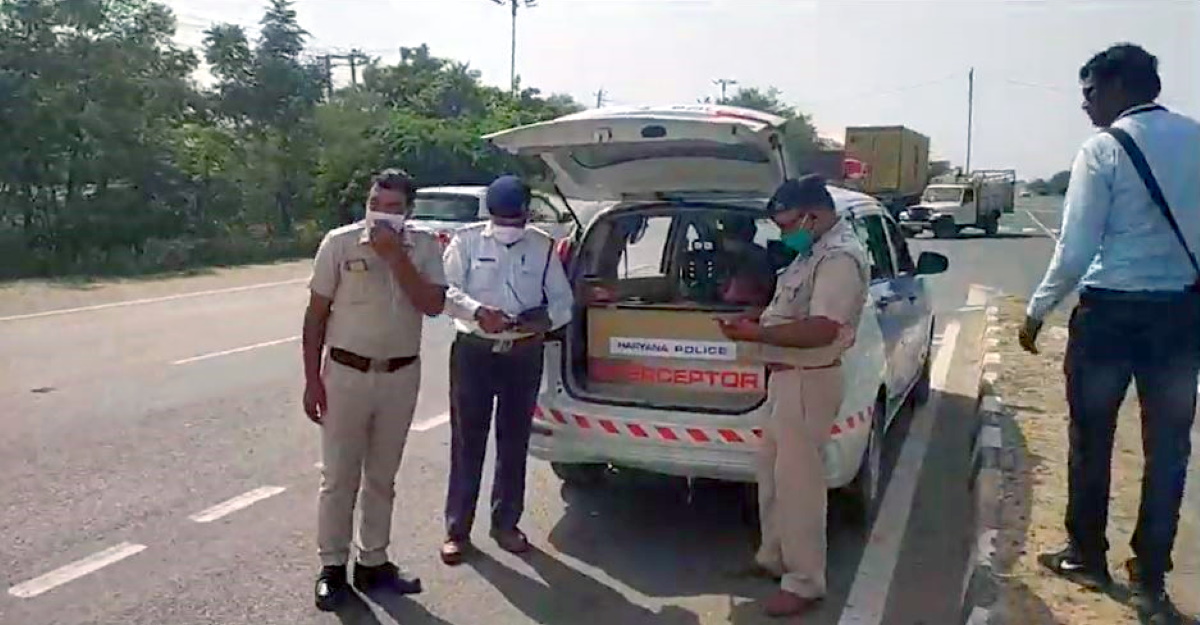Are Cars Detected By Camera By Cops
Overspeeding is ane of the prime number reasons for accidents in Bharat. The authorities and the police force enforcers do try to proceed the speeding vehicles in check past implementing speed detecting cameras on the roads and highways. There are fixed type speed detecting cameras that are permanently installed on the poles. Police also surprise the route users past using Interceptor vehicles that have such speed detection cameras installed. These are mobile and can be positioned anywhere along the roads.
Here is a alive video that shows how speed detecting cameras piece of work. The video by Keshav Today shows how the cops employ the set-up. The video is from Haryana. The cops hither are using radar-based speed detection systems, which are more than widely used around the world. However, there are also laser-based speed detection systems, which are more avant-garde and precise.
As well read: Royal Enfield Classic 650: What it"ll look like
The speed trap camera is installed in the boot of the Maruti Suzuki Ertiga of the police team. In that location is an operator who targets various cars to check the speed. The camera shows the speed of the moving vehicle to inform the operator. The operator and so tells the vehicle number to his colleagues who stop and effect an overspeeding challan to the violators.

During the live video, two cars crossed the speed limit of 90 km/h. The cops waved them to finish and issued a challan. The cops also said that they have to pay a fine of Rs two,000 and the license gets barred for three months. It is a court challan, which means that the violator volition have to visit the court to submit his license and the challan amount. In Republic of india, the fine for speeding has increased over the years to discourage motorists from speeding.
How do the speed trap cameras work?
Since they used radar-based cameras, we will merely talk near the applied science used in this system. A radar photographic camera uses the Doppler Consequence to detect the speed of the cars. The radar tin be of different forms including the handheld guns or the ones that we see here.
The radar-based camera throws radio waves that travel at the speed of light. The radio wave hits the moving vehicle and depending on the speed, the frequency of the radio wave gets compressed. When the wave travels dorsum to the radar-based camera, information technology and then calculates the speed in real-fourth dimension. The same arrangement tin be used for cars that go away from the photographic camera. In that case, the frequency of the radio waves go longer or longitudinal.
Light amplification by stimulated emission of radiation guns also use like technology but they are much more precise and much more than expensive as well. Modern radar-based cameras also come with an ANPR or Automatic Number Plate Recognition organisation that as well correctly identifies the registration number of the car.
In near cases, the cops remain subconscious from the view of the motorists but this video shows them parked correct on the highways, which can be dangerous to the motorists as well. The range of radar-based cameras is about 2 km, depending on the cameras.
Also read: Meet "Kush", a custom built, track-ready KTM RC390 from Rajputana Customs
![]()
Trending Stories
![]()
Latest Stories
Source: https://www.cartoq.com/speeding-first-in-depth-look-police-interceptor-video/
Posted by: petreecoulth56.blogspot.com

0 Response to "Are Cars Detected By Camera By Cops"
Post a Comment